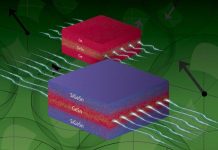
As the demand for lithium skyrockets—driven by electric cars, smartphones, and renewable energy storage—the race is on to find cleaner and faster ways to extract this vital metal.
Traditional methods are struggling to keep pace.
Extracting lithium from brine, or salty water, can take months of evaporation under the sun.
Rock-based extraction, which relies on high heat and chemicals, generates large amounts of toxic waste.
Neither process is fast, clean, or efficient enough to meet the world’s growing energy needs.
Now, researchers at Rice University have developed a game-changing alternative.
By using a technique called flash Joule heating, or FJH, scientists can rapidly heat lithium-rich rock to extreme temperatures in just milliseconds, while exposing it to chlorine gas.
This new one-step method makes it possible to pull lithium out of rock in seconds—without the acids, alkalis, or huge evaporation ponds used in current methods.
The results, published in Science Advances, could transform how lithium is produced and accelerate the global transition to cleaner energy.
The research team, led by Rice chemist James Tour, targeted spodumene, a hard-rock mineral that is the world’s most common source of lithium.
Spodumene is abundant in the United States, yet much of it remains untapped because traditional processing is slow and environmentally damaging.
With flash Joule heating, the researchers blast spodumene with a short pulse of electrical current.
The material instantly shifts from its stable form, known as α-spodumene, into a high-temperature form, β-spodumene, which is far more reactive.
When chlorine gas is introduced, the lithium vaporizes as lithium chloride, leaving behind aluminum and silicon compounds.
The entire reaction happens in seconds. “We can leapfrog monthslong water evaporation pools and dayslong acid leaching and then directly generate lithium chloride,” Tour explained. Lithium chloride can then be refined into battery-grade lithium, the critical ingredient in lithium-ion batteries.
Compared to traditional extraction, the new method is not only much faster but also more efficient. The team reported that it produced lithium chloride with 97 percent purity and 94 percent recovery, far higher than the yields from acid roasting or brine evaporation. “Our controlled, rapid-heating approach overcomes kinetic barriers that have hindered single-step extraction for decades,” said Shichen Xu, the study’s first author.
The environmental and economic implications are huge. Because the method doesn’t require acids or alkalis, it generates far less hazardous waste.
Its speed means smaller facilities could be built, lowering costs and reducing the need for massive centralized plants.
“This method paves the way for local, small-footprint lithium processing units or large-scale units for massive waste mining operations,” said co-author Justin Sharp. “It’s a real paradigm shift.”
The work is already moving toward real-world use. A Rice University startup called Flash Metals U.S. is scaling up the technology for commercial metals extraction, with a pilot plant scheduled to begin operation next year.
Beyond lithium, the approach could be applied to other strategic minerals. By combining extreme, short bursts of heat with favorable chemistry, flash Joule heating could unlock new ways of extracting valuable resources from natural ores and industrial waste.
For now, the breakthrough offers a much-needed solution to one of the most pressing challenges in clean energy. With faster, cleaner lithium extraction, the road to an electrified future may become a little smoother.
Source: Rice University.



